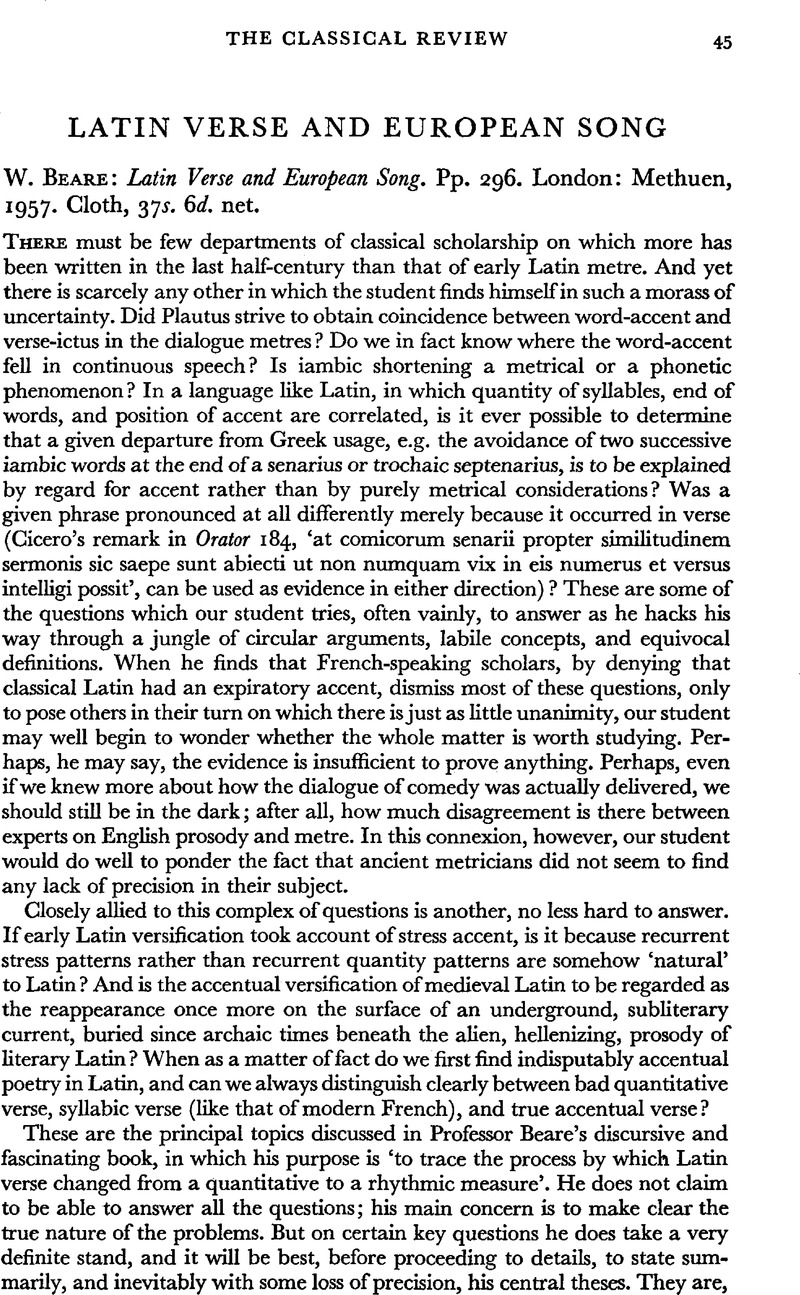No CrossRef data available.
Article contents
Latin Verse and European Song - W. Beare: Latin Verse and European Song. Pp. 296. London: Methuen, 1957. Cloth, 37s. 6d. net.
Published online by Cambridge University Press: 13 February 2009
Abstract

- Type
- Reviews
- Information
- Copyright
- Copyright © The Classical Association 1959
References
page 47 note 1 One would like to know more of classical Tamil versification. According to the brief sketch by J. Filliozat in Renou–Filliozat, L'Inde classique, ii (Paris, 1953), 717–19, something akin to iambic shortening takes place in conditions determined purely by the quantitative pattern, and in the absence of any dynamic ictus.
page 47 note 2 Jan Safarewicz, Professor in Cracow University, is a Polish scholar and not a Czech, as stated by Beare.
page 48 note 1 Cf. P. Maas, ‘Der byzantinische Zwölf- silber’, B.Z. xii (1903), 278–323; W. Nissen, Die byzantinischen Anakronteen (Munich, 1940); A. Dihle, ‘Die Anfange der griechischen akzentuirenden Verskunst’, Hermes, lxxxii (1954), 182–99.
page 48 note 2 Cf. F. J. H. Raby, Secular Latin Poetry, (1947), 87.


